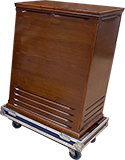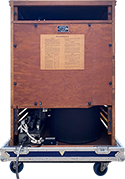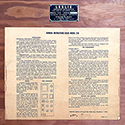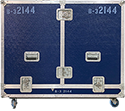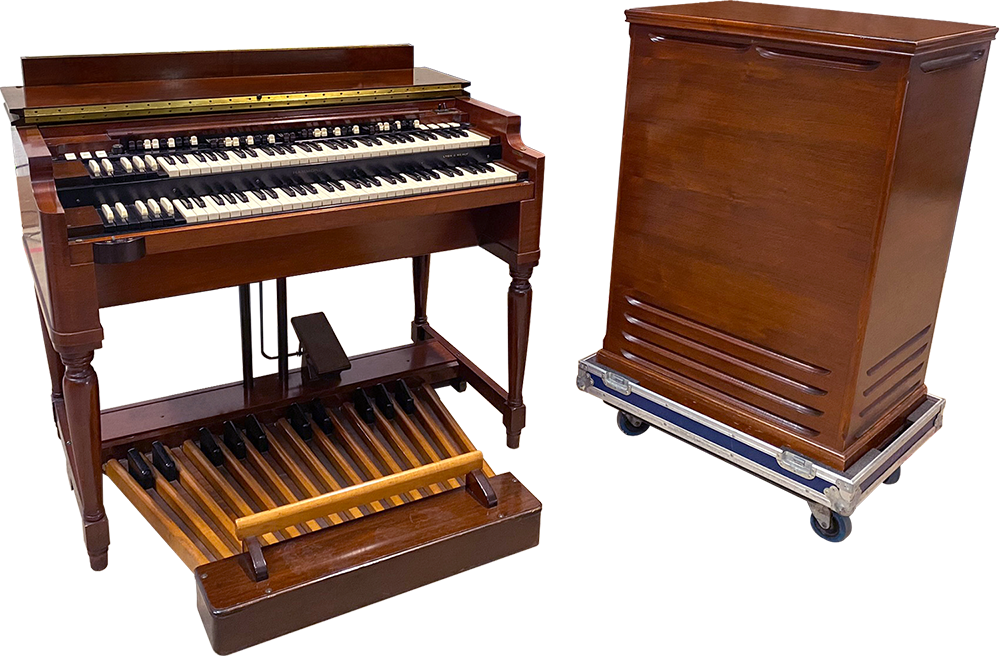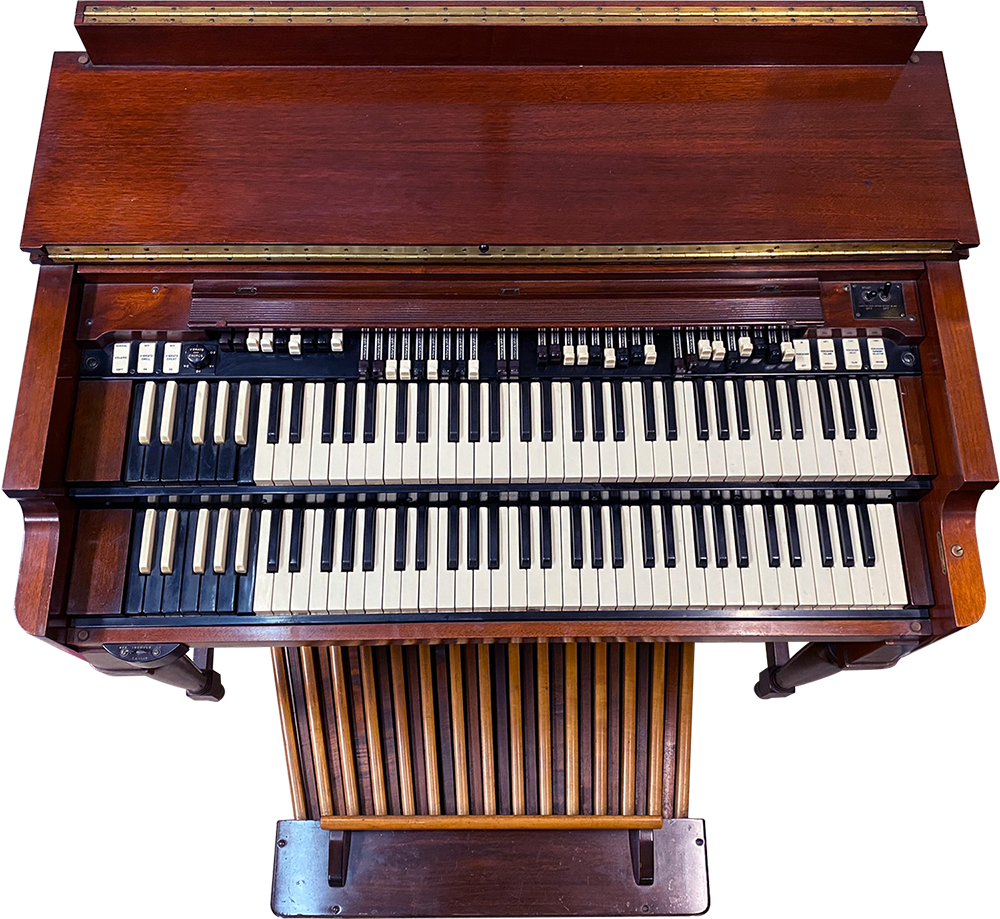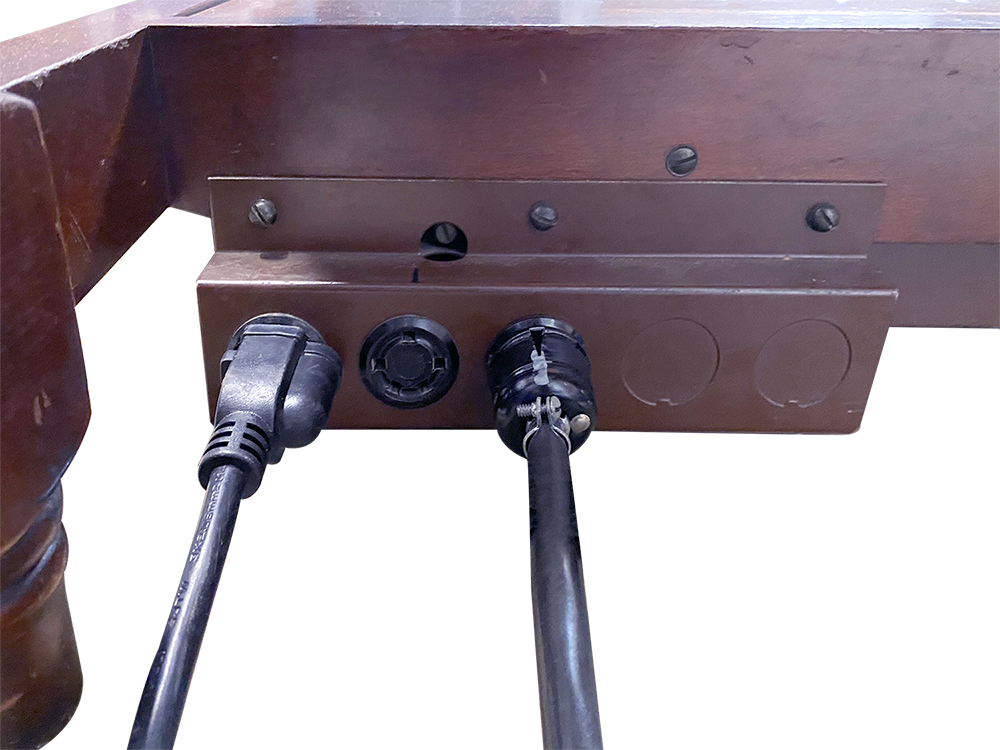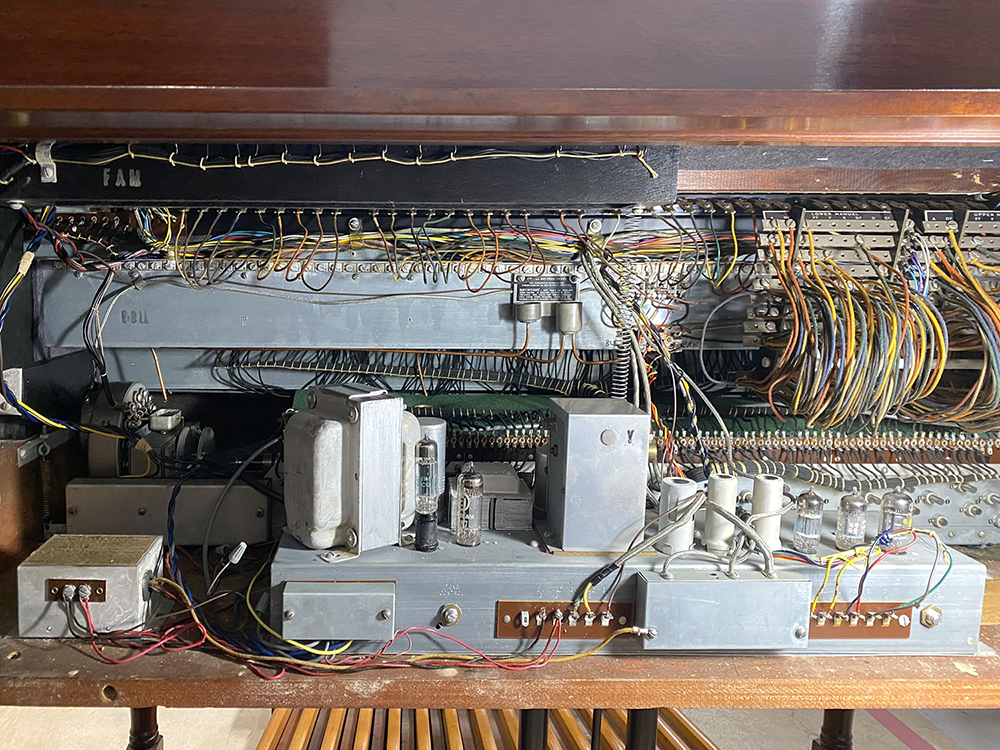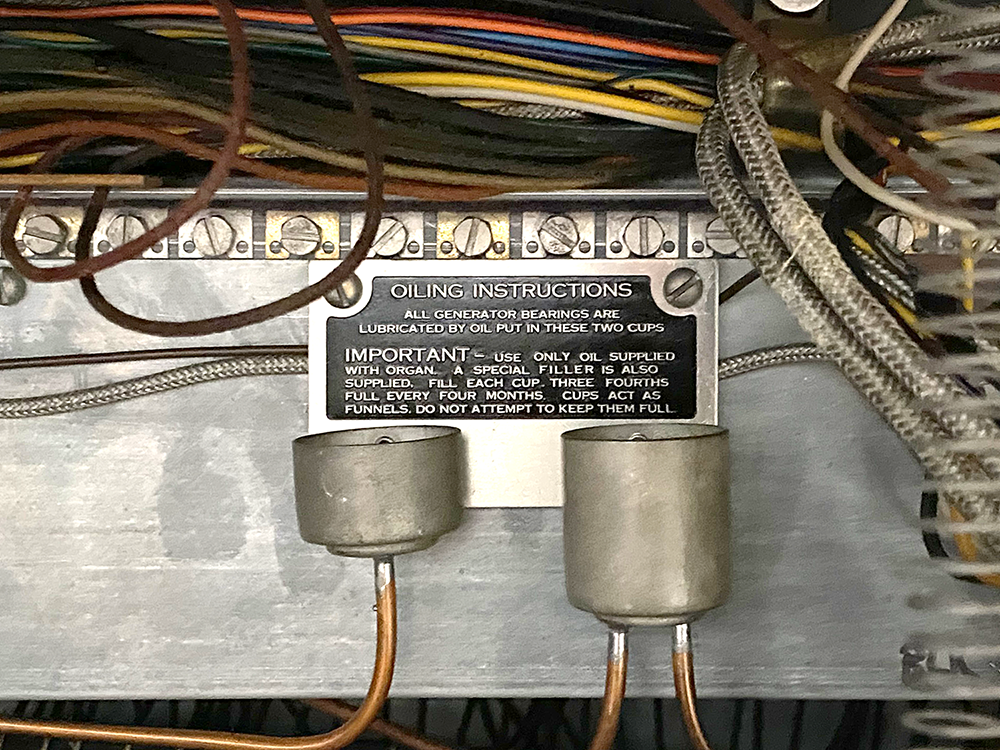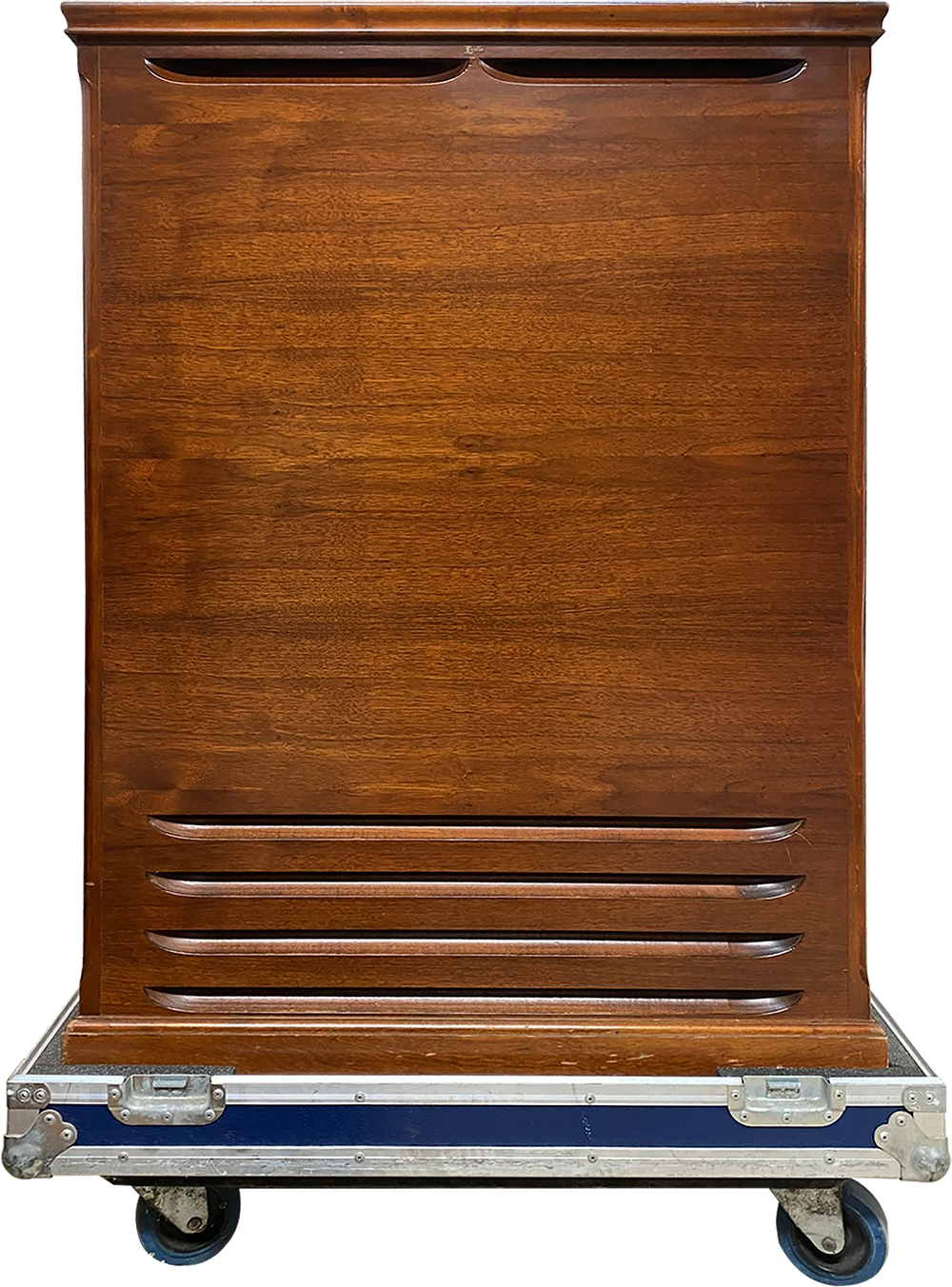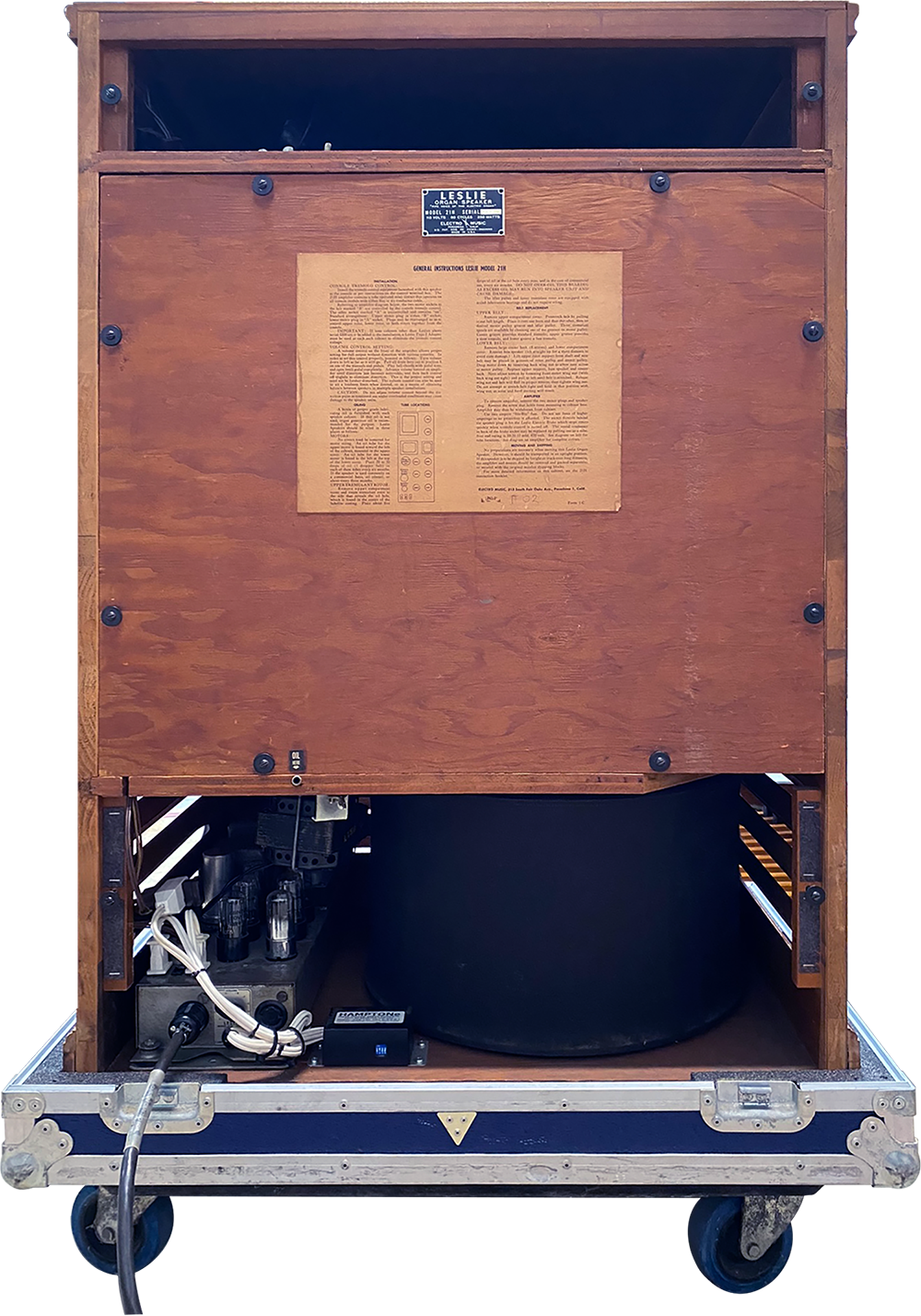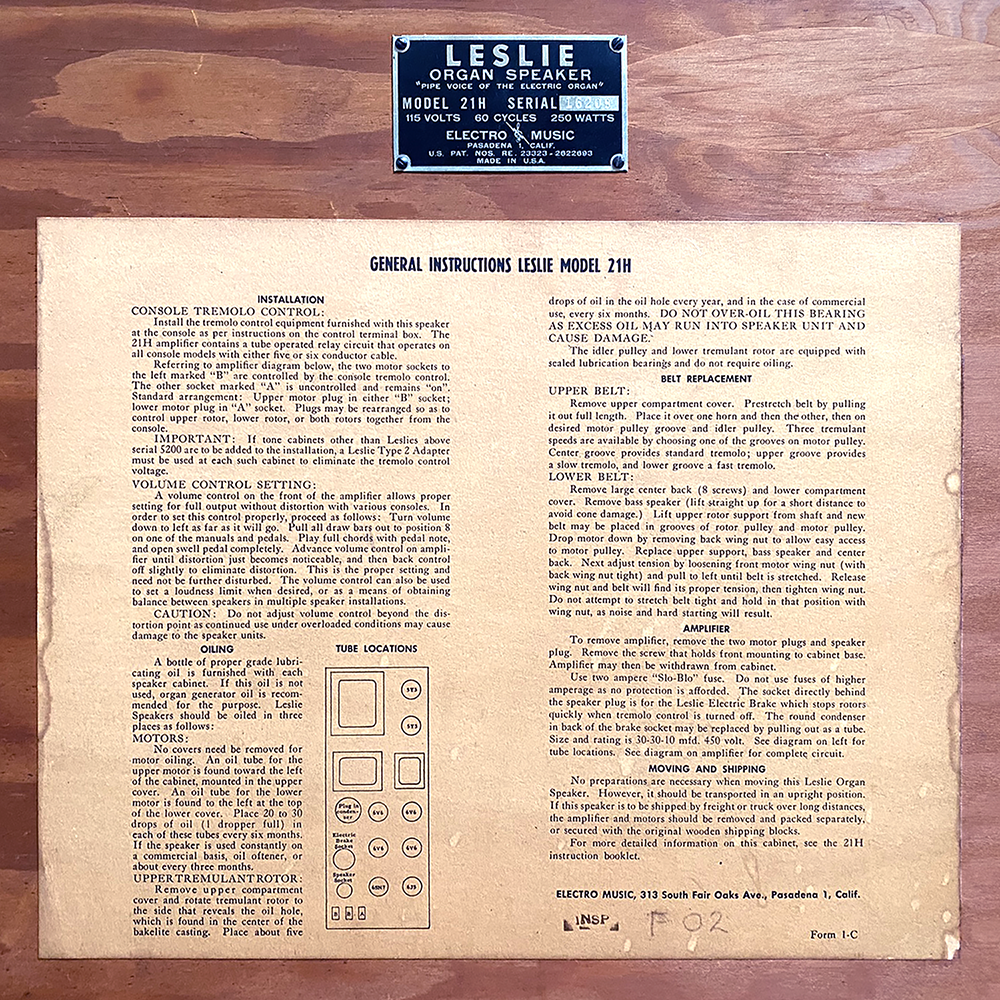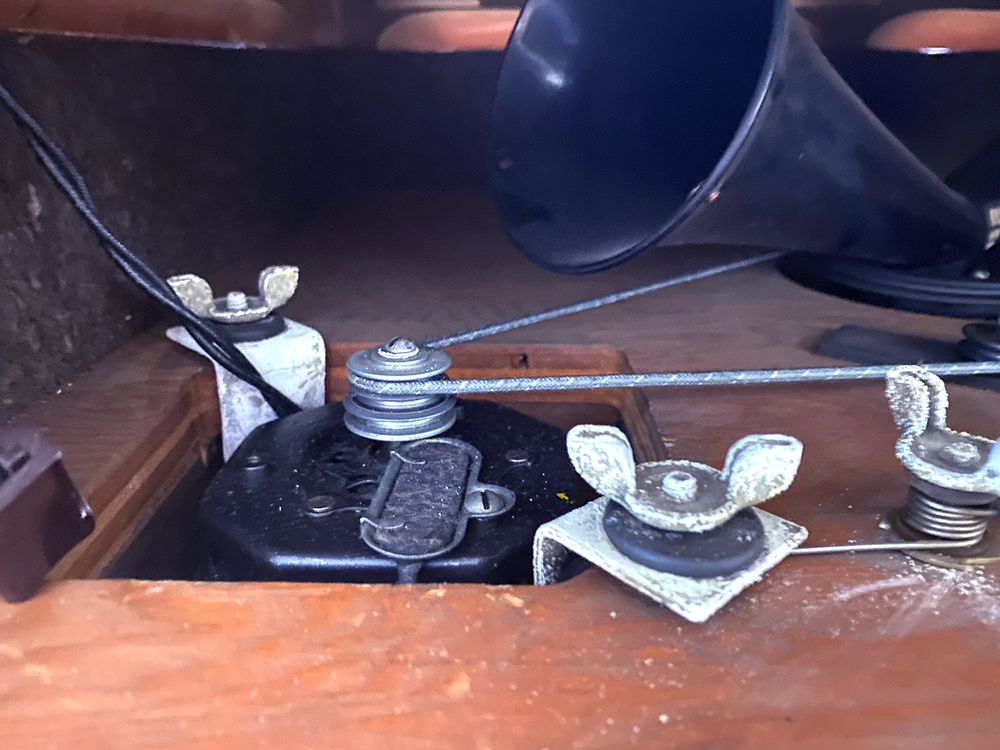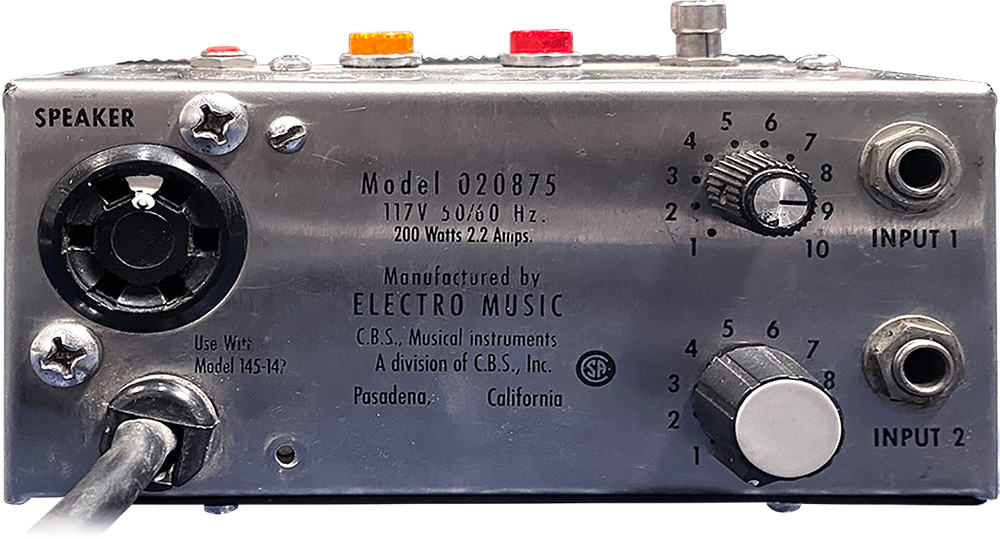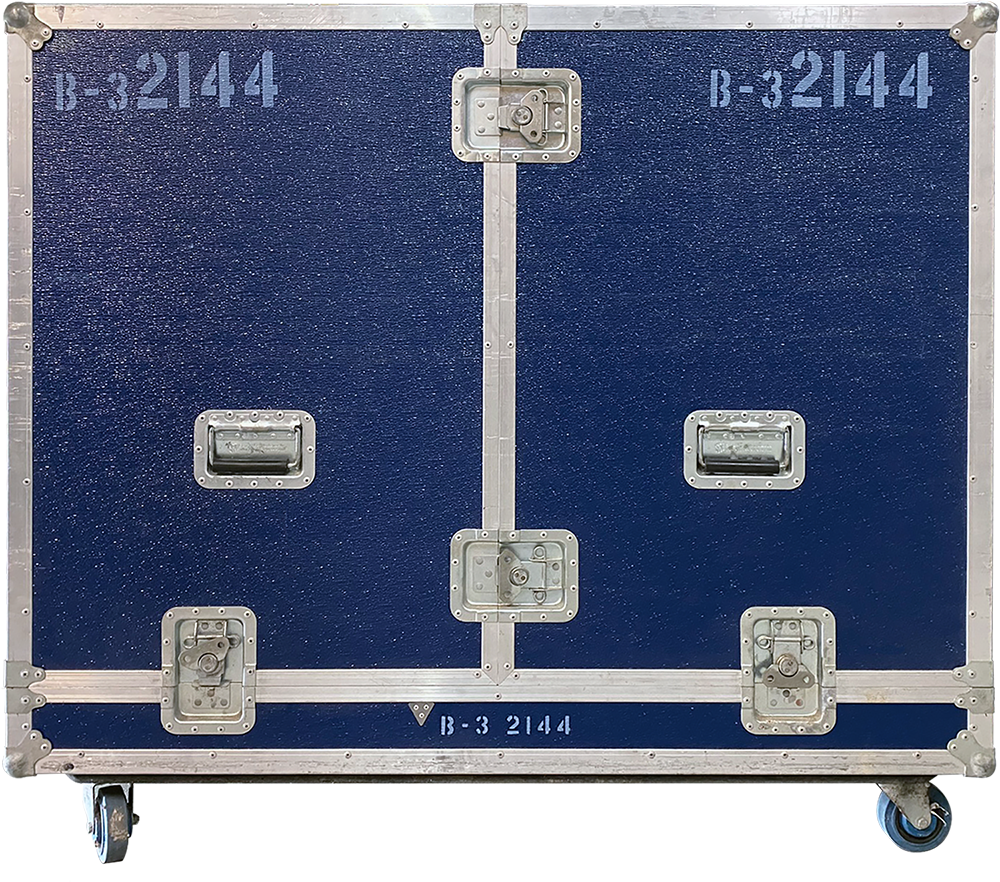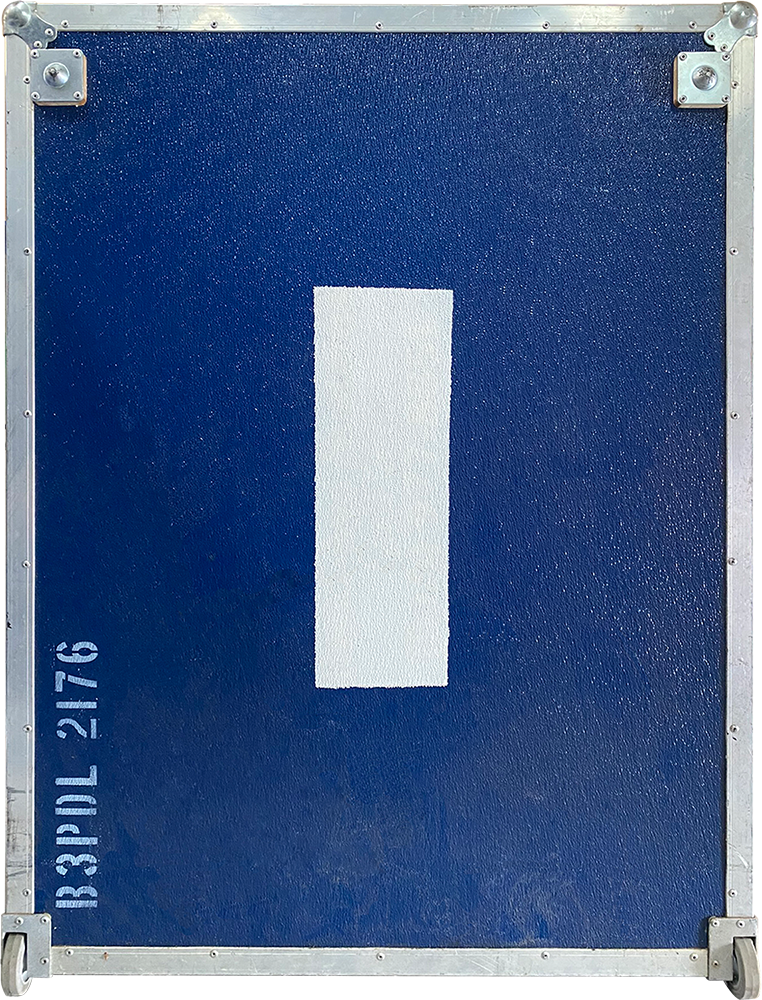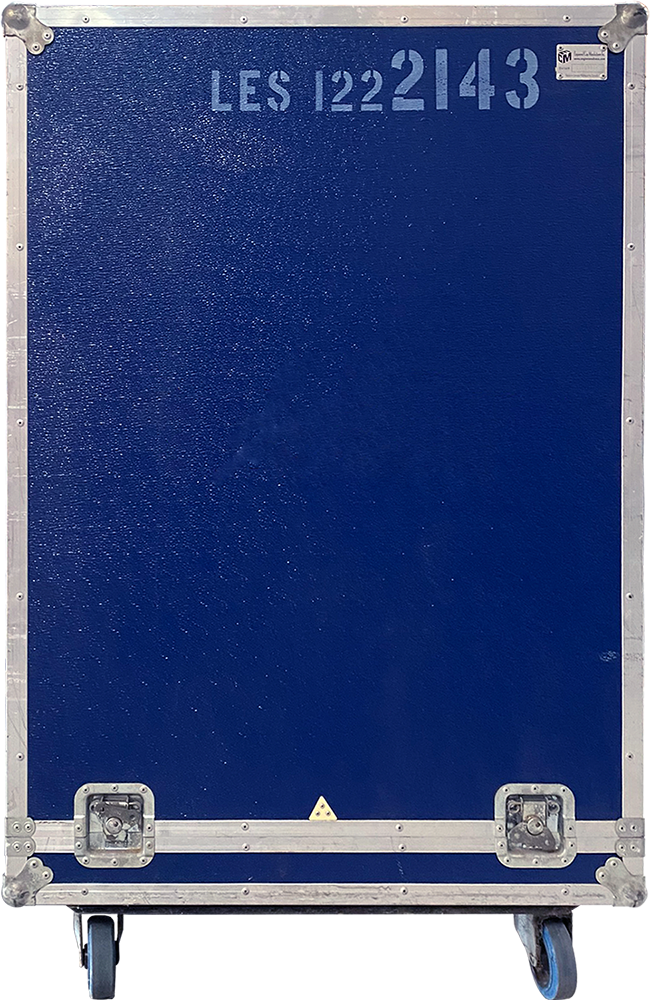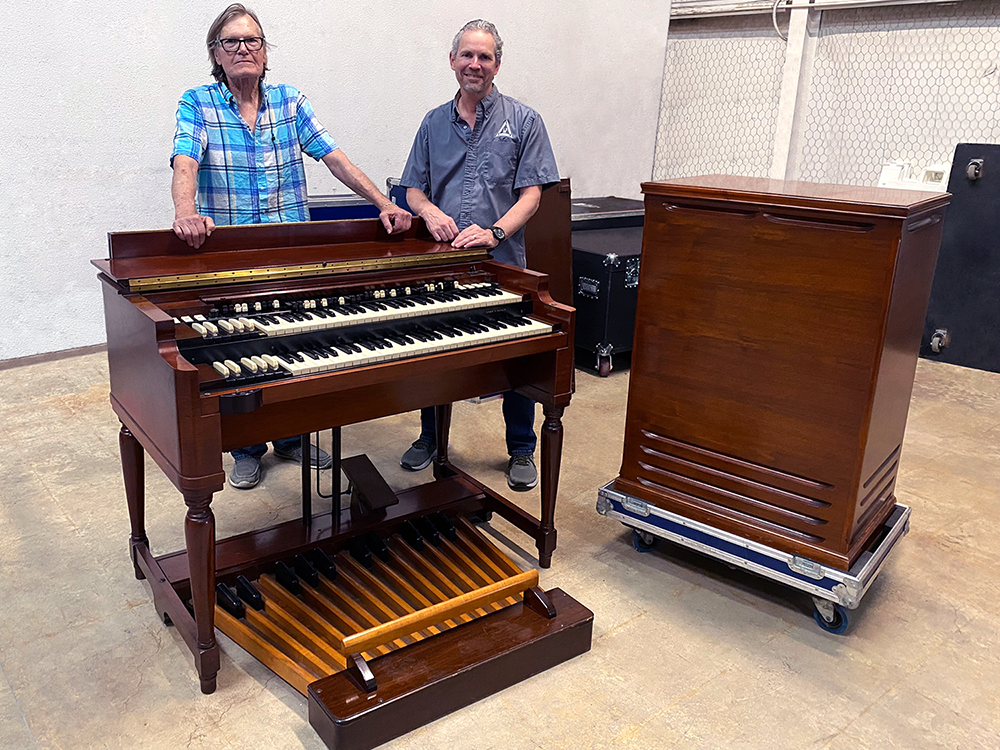
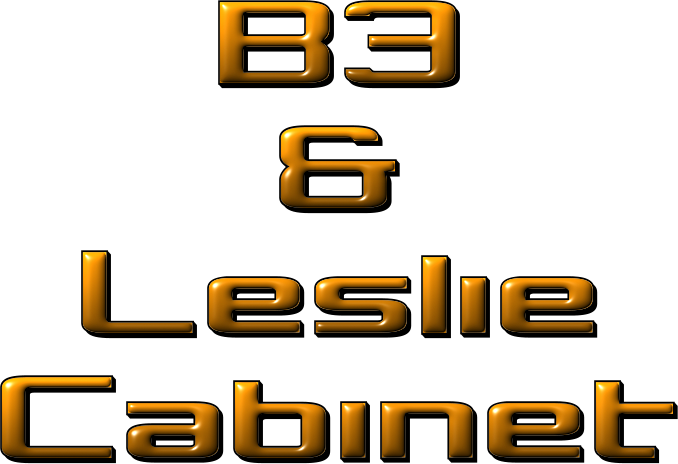


Hammond B3 & Leslie Model 21H.
Organ & Speaker Cabinet.
Hammond B3
The Hammond organ is an electric organ invented by Laurens Hammond and John M. Hanert[6] and first manufactured in 1935.[7] Multiple models have been produced, most of which use sliding drawbars to vary sounds. Until 1975, Hammond organs generated sound by creating an electric current from rotating a metal tonewheel near an electromagnetic pickup, and then strengthening the signal with an amplifier to drive a speaker cabinet. The organ is commonly used with the Leslie speaker.
Around two million Hammond organs have been manufactured. The organ was originally marketed by the Hammond Organ Company to churches as a lower-cost alternative to the wind-driven pipe organ, or instead of a piano. It quickly became popular with professional jazz musicians in organ trios, small groups centered on the Hammond organ. Jazz club owners found that organ trios were cheaper than hiring a big band. Jimmy Smith's use of the Hammond B-3, with its additional harmonic percussion feature, inspired a generation of organ players, and its use became more widespread in the 1960s and 1970s in rhythm and blues, rock, reggae, and progressive rock.
In the 1970s, the Hammond Organ Company abandoned tonewheels and switched to integrated circuits. These organs were less popular, and the company went out of business in 1985. The Hammond name was purchased by the Suzuki Musical Instrument Corporation, which proceeded to manufacture digital simulations of the most popular tonewheel organs. This culminated in the production of the "New B-3" in 2002, a recreation of the original B-3 organ using digital technology. Hammond-Suzuki continues to manufacture a variety of organs for both professional players and churches. Companies such as Korg, Roland, and Clavia have achieved success in providing more lightweight and portable emulations of the original tonewheel organs. The sound of a tonewheel Hammond can be emulated using modern software audio plug-ins.
Leslie Model 21H
Don Leslie loved the (then) new Hammond Organ, but found the tone a little “square’. He wished the Hammond to sound more like his beloved “Mighty WurliTzer” Theatre Pipe Organ. Being a seasoned and skilled inventor, he imagined utilizing a principle called the “Doppler Effect”-(It’s why a train whistle seems to go down in pitch when a train passes you). Don took a horn speaker, and developed an apparatus to make it spin around in a circle. Legend has it Don constructed the whole thing in a closet! His experiment bore fruit-The spinning horn gave the Hammond Organ what is called in the pipe organ world, a “tremulant”. Vibrato, Tremolo, and a little “whoosh” of air all put together. It made the Hammond Organ sound completely different. The Hammond’s life in all popular music-Jazz, Rock, Pop was born at that moment, and Don Leslie secured his place in the rare pantheon of immortal inventors. Leslie speakers cabinets built from 1951 to 1958 are marked 21H.This particular cabinet has the Serial number of 16209.









